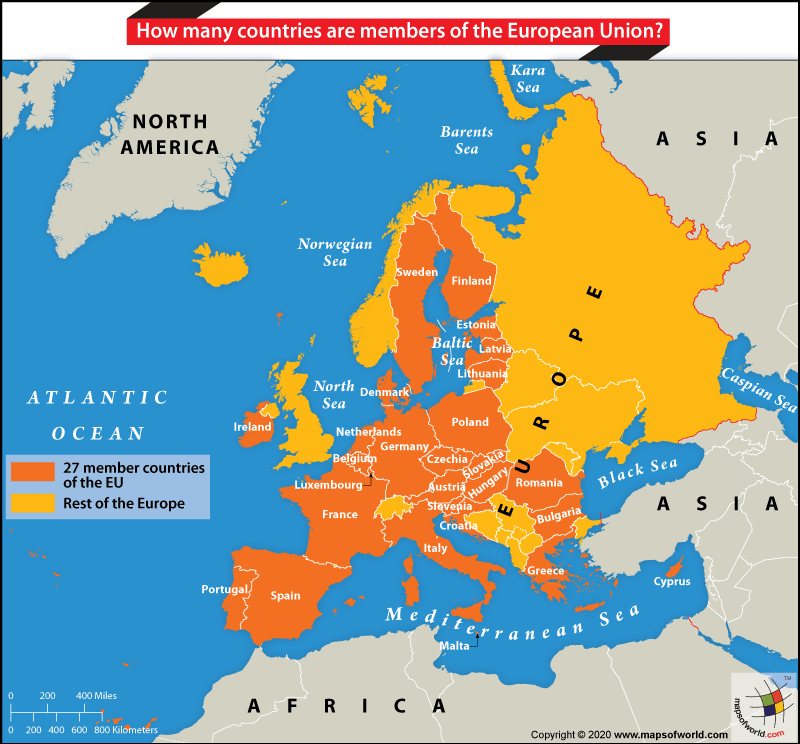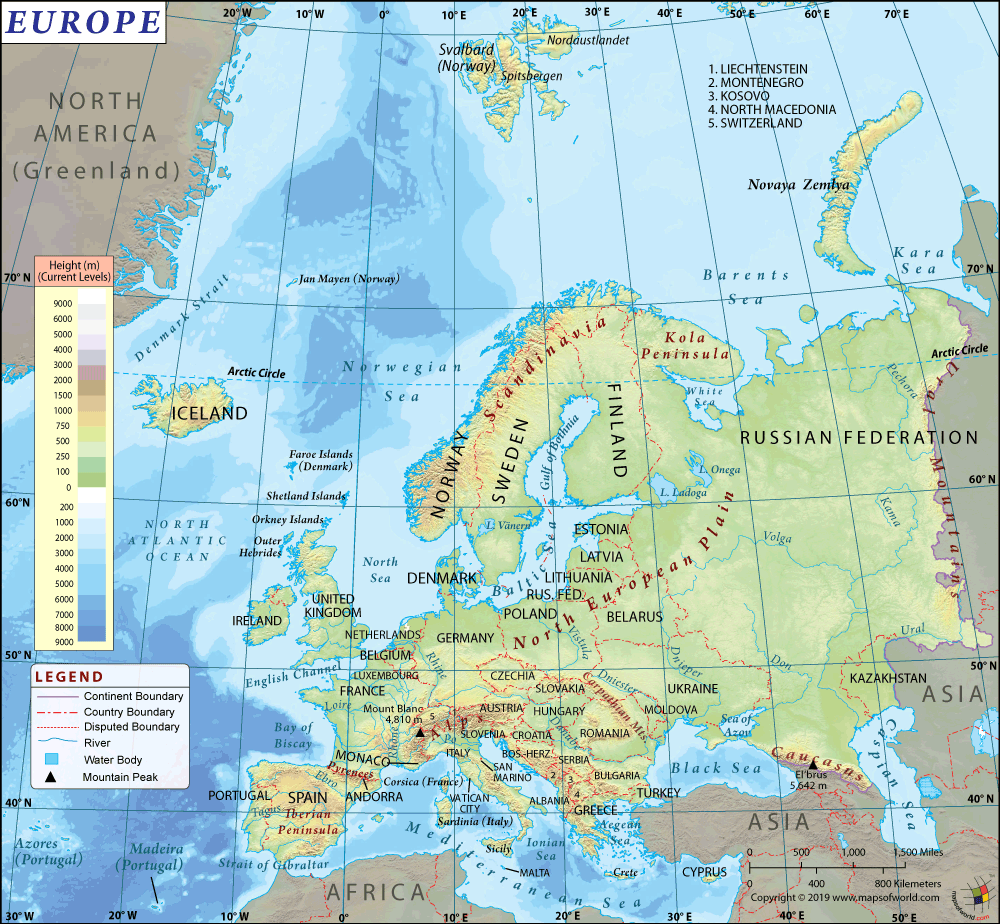How Many Countries are Members of the European Union?

The European Union (EU) is an international organization that comprises 27 countries from Europe’s continent. They are all considered the members of the European Union. This union is centered on the furtherance of common economic and socio-cultural goals and cooperation in several matters, including defense, trade, and technology transfer. To learn about the groups, check our Country Groups section.
The European Union leaders, as of August 2020, are:
European Parliament President: David Maria Sassoli
European Council President: Charles Michel
European Commission President: Ursula von der Leyen
Here is a list of the 27 members of the European Union, as of 2020:
|
Country |
EU Member Since |
|
Belgium |
January 1, 1958 |
|
France |
|
|
Germany |
|
|
Italy |
|
|
Luxembourg |
|
|
Netherlands |
|
|
Denmark |
January 1, 1973 |
|
Ireland |
|
|
United Kingdom (left EU on Jan 31, 2020) |
|
|
Greece |
January 1, 1981 |
|
Portugal |
January 1, 1986 |
|
Spain |
|
|
Austria |
January 1, 1995 |
|
Finland |
|
|
Sweden |
|
|
Cyprus |
May 1, 2004 |
|
Czechia |
|
|
Estonia |
|
|
Hungary |
|
|
Latvia |
|
|
Lithuania |
|
|
Malta |
|
|
Poland |
|
|
Slovakia |
|
|
Slovenia |
|
|
Bulgaria |
January 1, 2007 |
|
Romania |
|
|
Croatia |
July 1, 2013 |
In 1957, six European nations – Belgium, France, Italy, Luxembourg, the Netherlands, and West Germany – came together and decided to form the European Economic Community (EEC). Other nations such as the UK, Denmark, Greece, Spain, and Portugal joined in subsequently. The community’s main focus was to facilitate free trade and work towards the economic growth of the member states. In 1993, the Maastricht Treaty came into force, and the EEC became the European Union. Some 16 countries joined the EU in subsequent years.
Membership of the EU is granted only to countries that meet the “Copenhagen criteria” – a set of criteria spelled out during the European Council meeting held in Copenhagen in 1993. The criteria include that the prospective members have deep-rooted commitments towards democracy, human rights, and law. A functioning market economy is also imperative. When accepted, the members may enjoy equal rights and privileges but will also have certain obligations to fulfill.
While the EU has 27 members, not all member countries are part of the Eurozone. The Eurozone consists of 19 EU member states, two non-member states, and four microstates that have adopted the Euro as their official currency. 8 EU members do not use the Euro as their currency.
The United Kingdom is the first-ever member state to leave the EU. The UK decided to leave the EU after a historic referendum, held on June 23, 2016, where the majority (51.8 percent of the votes cast) voted in favor of leaving the EU. In March 2017, the UK’s prime minister triggered Article 50 of the Lisbon Treaty, which set in motion the exit process of the UK from the EU in the following years. Finally, on January 30, 2020, at 11 p.m. (GMT), the UK left the EU. Before this, in 1985, Greenland (an autonomous province of Denmark) had announced its withdrawal.
Related Links:
Related Map:

